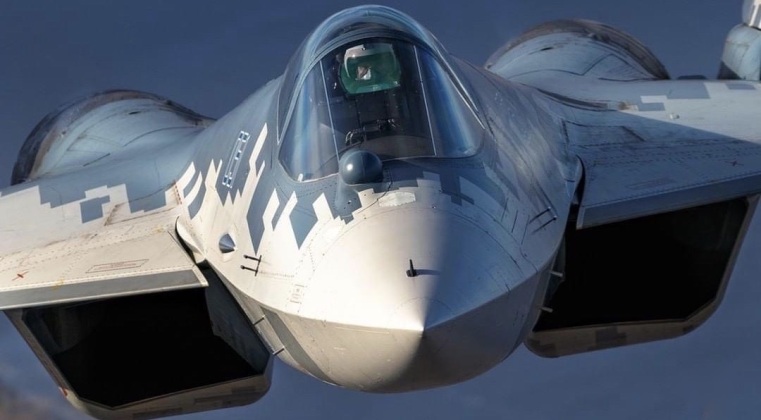News
2022 Was the First Year of ‘High Serial Production’ for Russia’s Su-57 Fighter: Larger Deliveries Incoming
The year 2022 was the first in which the Russian Su-57 next generation fighter was produced on a large scale, according to a statement from the Head of the state run United Aircraft Corporation Yury Slyusar in a live broadcast on the Rossiya-24 TV channel. “This is actually the first year of the highly serial production of Su-57 planes in Komsomolsk and subsequently their number will increase. We reached more or less substantial production of these planes this year,” he stated. The last fighters produced in 2022 have not yet been delivered to the Russian Air Force, with the total number produced during the year remaining unknown. The Su-57 is expected to begin deliveries at a rate of around 14 airframes per year in 2025, which would allow it to match delivery rates of the Su-30, Su-34 and Su-35 which have all been in production for around decade to meet Defence Ministry orders. The aircraft is expected to be produced on a considerably larger scale than the three older fourth generation fighter classes, and gradually replace the Su-35 and Su-30 not only at Komsomolsk-on-Amur in the Russian Far East where it is currently built in parallel to the Su-35, but also at the Irkutsk Aviation Plant where Su-30s are built to meet both domestic and foreign orders. The Su-57 is speculated to have already seen foreign orders placed, namely from Algeria which has consistently been highly secretive regarding its arms acquisitions from Russia, meaning a production rate exceeding 14 airframes per year would need to be reached by 2025 to allow industry to meet both foreign and domestic orders on schedule.

A successful and timely delivery to Algeria, and widespread deployments domestically, are expected to simulate greater overseas demand for the Su-57 with many clients having reportedly been hesitant due to the significant delays the Russian Air Force has faced in receiving the aircraft. The Su-57 was initially scheduled to enter service in 2015, have 50 aircraft in service by 2020, and have 200 in service by 2025. The first airframe was instead delivered in December 2020, with only 76 set to be in service by the end of 2027. The original induction schedule was itself very significantly behind that of the Soviet Union’s prior more ambitious fifth generation fighter the MiG 1.42, which was expected to enter service between 2000 and 2005. The MiG would have seen several hundred airframes already made operational by 2015, which was a projection that persisted despite cuts to the Soviet defence budget after 1989, with a number of the more ambitious technologies the Soviet Union was developing for the project notably absent from the Su-57. Delays bringing the Su-57 into serial production mean that the baseline Su-57 airframe is only expected to see a production run of a few dozen airframes, with the enhanced Su-57M using superior Saturn 30 engines set to begin production around 2025 and benefitting from a wide range of other enhancements.

The Su-57 is notably the only post fourth generation fighter to have been deployed extensively for operations against a state actor, with Russia’s small existing fleet assigned to conduct strikes and air defence suppression operations over Ukraine demonstrating its value in roles beyond air superiority. The fighter is one of just three of its generation in production worldwide, alongside the Chinese J-20 and American F-35, although China and the United States are considered to have a very strong lead over Russia in developing sixth generation fighters with both set to induct their first sixth generation units into service around 2030. Post Soviet decline in the combat aviation sector means Russia’s fleet will still be formed predominantly of enhanced fourth generation fighters such as the Su-35 when the first Chinese and American sixth generation fighters enter service, and as a result significant investments have been made to integrate a number of sixth generation technologies onto the Su-57 to ensure that its capabilities remain viable into the 2030s.












